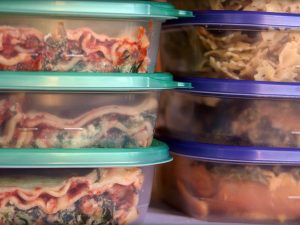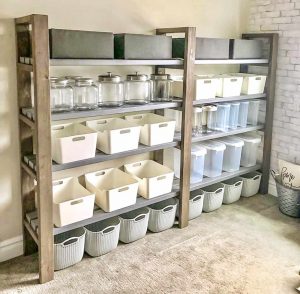Food pantries, or “pantries” as they were referred to back then, were an essential element of every household. Because weekly trips to the market were unrealistic or impossible, families depended on their pantries to get through the long winter months.
Most individuals nowadays live within a short drive to a grocery shop, so putting up a home-cooked food pantry may seem unnecessary. Organizing a pantry for long-term food preservation, on the other hand, is an excellent idea for a variety of reasons.

The benefits of a homemade food pantry
Building a food pantry for long-term food storage has numerous advantages.
- Urgent readiness
One of the most important advantages of having a home food pantry is that you can prepare for both short- and long-term situations. There are a variety of scenarios that can make going to the grocery store difficult or impossible, and Ready.gov provides a comprehensive list of hypothetical emergency scenarios to illustrate the point, ranging from a biological attack to a large snowstorm to a pandemic. When you read the list, your stress levels may soar, as mine did.
It is important to realize that food shortages can occur anywhere, at any time, even if your area is not experiencing an emergency. Most grocery stores only have enough food on hand to meet the needs of their community for three days, sometimes even less. If something happens to disrupt the food supply chain, this means your local market could run out of food very quickly.
- Save money
A homemade food pantry is also a great way to save money at the grocery store. A large pantry gives you the space you need to shop in bulk, take advantage of the weekly sales, and you can get your own food from the garden. A well-stocked pantry also means you don’t have to go to the grocery store every few days, saving money on gas. With fewer trips to the store, you’re also less likely to be tempted by impulse purchases and other unplanned purchases. You will also save a considerable amount of time by buying less.
A home pantry provides food security for you and your family. This is especially important if you lose your job, lose a working spouse, become ill, have fluctuating income, or if you only work seasonally. Having enough food on hand means you don’t have to worry about feeding your family; This can alleviate a great deal of stress in uncertain times.

How to organize a homemade food pantry
Setting up a homemade food pantry doesn’t have to be a major project. It is often best to start small and slowly build your pantry over time.
- Consider your goals
First, think carefully about why you want a home pantry. Your goals will directly affect the amount of space you need. For example, is your goal simply to have a three-day supply of food for everyone in your family, as recommended by Ready.gov, or do you want enough food to be stored to get you through a longer emergency? Do you want your pantry to serve as a mini market so you can stock up on bulk or retail produce, or do you want more space for canned goods and farmers’ market produce?
These are just a few common goals for a food pantry, and yours could be a combination of all of them. It is important to think about what you want to use your food pantry for so that you reserve enough space to meet your needs.
- Think about the location
The best place for long-term airtight containers is often against an exterior wall in the basement because it is cooler here. However, if your home doesn’t have a basement, any cool dark corner or closet will work just fine. If you live in a small house or apartment, dedicating an entire closet to long-term food storage might not be an option. Instead, find other unused spaces where you can store extra food. Under the bed and at the top of your closet, there are good places to start.
- Buy shelves
If needed, start shopping for wood shelves or sturdy wire to use in your pantry. The bookshelf often goes on online sale in August during back-to-school events, and in January. If you have the skills and tools, you will save money by building your own bookshelves.
